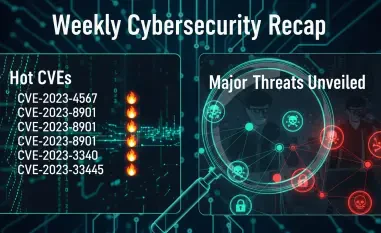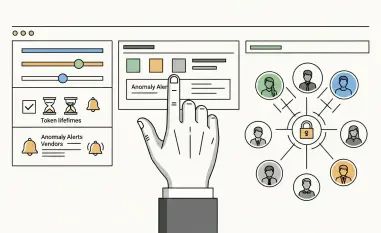Today, we’re diving into the complex world of cyber espionage with Malik Haidar, a seasoned cybersecurity expert with a track record of defending multinational corporations against sophisticated threats. With deep expertise in analytics, intelligence, and security, Malik has a unique perspective on integrating business goals with robust defense strategies. In this interview, we explore the intricacies of the PassiveNeuron APT campaign, a alarming cyber operation targeting key sectors across multiple continents. We’ll discuss the malware tools driving these attacks, the cunning tactics used by the threat actors, and the evolving challenges organizations face in detecting and mitigating such stealthy intrusions.
Can you give us a broad picture of the PassiveNeuron campaign and explain why it’s causing so much concern in the cybersecurity community?
Absolutely, Frans. The PassiveNeuron campaign is a highly sophisticated cyber espionage operation that’s been targeting government, financial, and industrial organizations across Asia, Africa, and Latin America. What makes it a big deal is the level of stealth and adaptability it demonstrates. The attackers use custom-built malware and clever infrastructure tricks to stay under the radar while moving through networks and exfiltrating sensitive data. This isn’t just a smash-and-grab; it’s a long-term, strategic effort to compromise critical entities, which could have serious geopolitical and economic implications.
Which regions and types of organizations are in the crosshairs of this campaign, and why do you think they’re being targeted?
The campaign primarily focuses on organizations in Latin America, East Asia, and parts of Africa. We’re talking about government bodies, financial institutions, and industrial sectors—entities that hold valuable intellectual property, sensitive policy data, or control critical infrastructure. I believe these targets are chosen because they offer high-value information that can be leveraged for political influence, economic gain, or even strategic military advantage. These regions also often face resource constraints in cybersecurity, making them more vulnerable to such advanced threats.
When did the cybersecurity world first become aware of PassiveNeuron, and how has the campaign evolved over time?
The campaign was first flagged in November 2024, with initial attacks observed as early as June of that year targeting government entities. Since then, there’s been a notable wave of infections from December 2024 through August 2025. What’s striking is how the attackers have refined their approach over time—updating their malware, changing communication methods, and adapting to defensive measures. This evolution shows they’re learning from each engagement, making them harder to predict and counter.
Let’s dive into the technical side. Can you break down the malware families, Neursite and NeuralExecutor, used in this campaign?
Sure. Neursite is a modular backdoor written in C++, designed to be highly flexible. It can gather system information, manage processes, and even proxy traffic through other infected machines to facilitate lateral movement within a network. Its plugin-based structure allows attackers to add capabilities like executing shell commands or managing files on the fly. NeuralExecutor, on the other hand, is a .NET implant focused on downloading and executing additional payloads. It’s versatile in communication, using protocols like TCP, HTTP, or WebSockets, and in newer versions, it retrieves command-and-control server addresses from platforms like GitHub, which is a clever way to mask their infrastructure.
Why do you think the attackers are pairing custom malware like Neursite with a well-known tool like Cobalt Strike?
Mixing custom malware with a legitimate tool like Cobalt Strike is a strategic move. Cobalt Strike is widely used in penetration testing, so its presence on a network might not immediately raise red flags—it can blend in as legitimate activity. Meanwhile, custom tools like Neursite give them tailored capabilities that off-the-shelf tools can’t provide. This combination allows them to maximize flexibility while minimizing the chance of detection, as defenders might focus on the known tool and miss the bespoke malware.
How are these attackers initially gaining access to their targets’ systems?
From what we’ve seen, they often target Microsoft SQL servers, likely exploiting weaknesses like brute-forcing admin passwords, SQL injection flaws in applications, or unknown vulnerabilities in the server software itself. Once they gain a foothold, they attempt to deploy web shells for basic command execution. If that fails, they pivot to more advanced implants using DLL loaders placed in critical system directories, ensuring they maintain access even if initial attempts are thwarted.
The attackers are using compromised internal servers as part of their command-and-control infrastructure. Can you explain why this tactic is so effective?
It’s a brilliant move for staying undetected. By using already compromised internal servers as intermediaries for command-and-control, they reduce the need for external communication that could be flagged by network monitoring tools. This setup makes their traffic look like normal internal activity, blending in with legitimate operations. For organizations, this is a nightmare because it means traditional perimeter defenses are less effective—you’re not just guarding against outside threats but also against your own systems being turned against you.
What challenges does this internal command-and-control approach pose for organizations trying to detect and stop these attacks?
It significantly raises the bar for detection. Most security tools are designed to spot unusual external connections, but when the malicious activity is routed through internal servers, it’s much harder to distinguish from legitimate traffic. Organizations need to invest in advanced behavioral analysis and endpoint monitoring to catch anomalies within their own networks. It also means that incident response has to be faster and more thorough because once an internal server is compromised, the attackers can potentially access everything connected to it.
Looking ahead, what’s your forecast for the future of campaigns like PassiveNeuron in the cyber espionage landscape?
I expect campaigns like PassiveNeuron to become more common and even stealthier. As defenders get better at detecting traditional attack patterns, threat actors will continue to innovate—using legitimate platforms for command-and-control, exploiting trusted tools, and focusing on internal network compromise. We’re likely to see an increase in targeting of cloud environments and supply chains as well, since those offer new entry points. For organizations, the key will be building resilience through layered defenses, continuous monitoring, and a proactive approach to threat hunting to stay ahead of these evolving threats.













